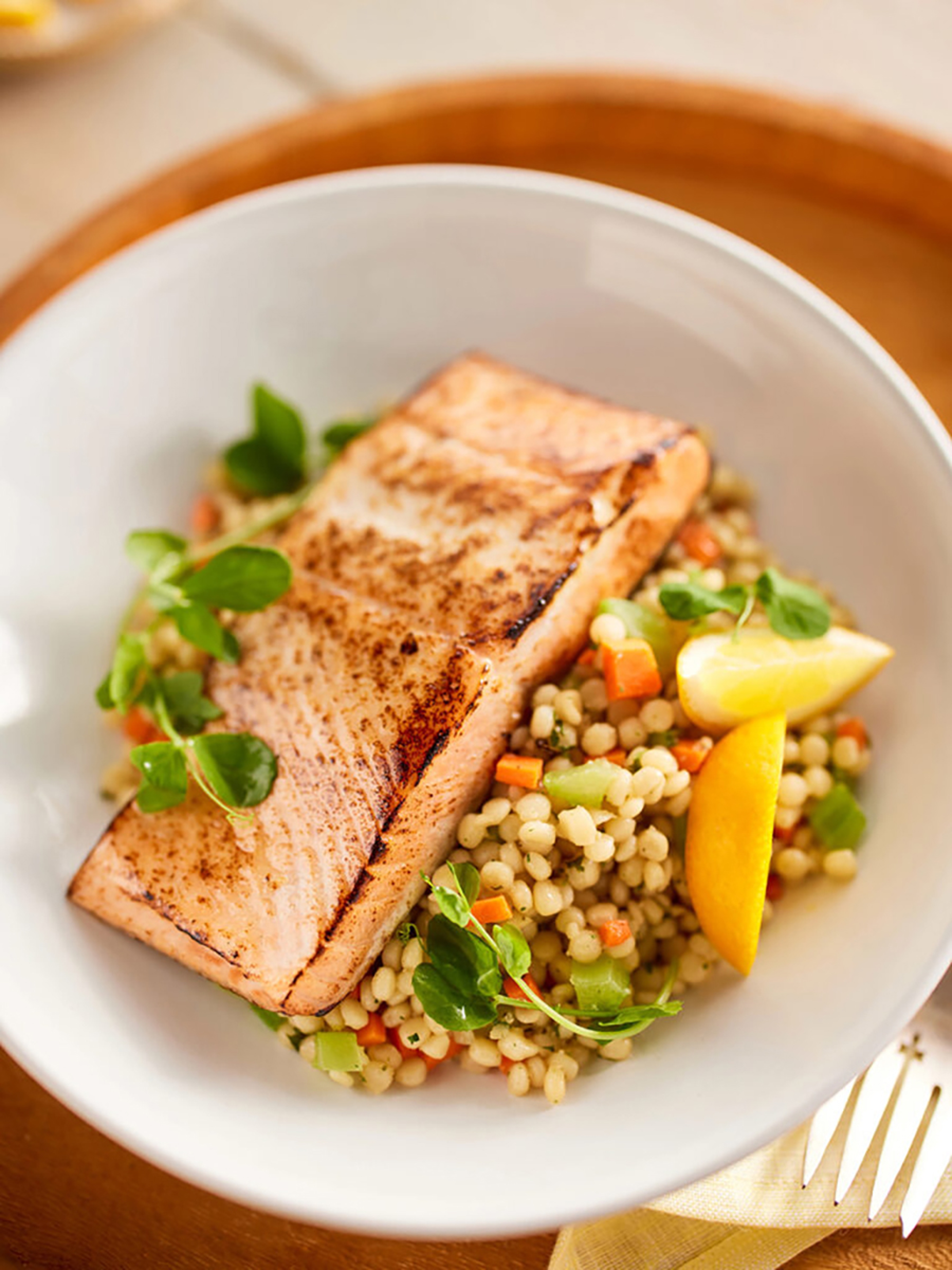Why Omega-3 Levels Vary in Wild Salmon
Omega-3 levels in wild Pacific salmon vary by species. Learn how to find the richest source of these nutrients.
Jul 06, 2022
Omega-3 fatty acids are abundant in salmon. These fats represent a classic win-win, as they are associated with both health benefits and rich, delicious flavor.
A common Vital Choice customer question: Which type of wild salmon offers the most abundant omega-3 content?
The first fact to know is that there are five types of wild Pacific salmon. We sell all five at Vital Choice.
Generally speaking, salmon species that have more total fat will also have more omega-3 fatty acids.
Salmon species that have evolved to spend more time in colder waters and undertake longer migrations up their birth rivers to spawn will accumulate more fat, including omega-3s.
This table shows the fat and omega-3 content of the wild salmon species we offer, per 3.5 oz (100 g) serving. These are averages, because the nutrient content of individual salmon will vary within each species, depending on the year and their harvest location:
How much omega-3 is in wild salmon?
King Salmon (chinook)
- Total fat: 10.4 grams
- Omega-3s: 2 grams
Sockeye Salmon (red)
- Total fat: 8.6 grams
- Omega-3s: 1.2 grams
Silver Salmon (coho)
- Total fat: 5.9 grams
- Omega-3s: 1.3 grams
Pink Salmon (humpie)
- Total fat: 3.5 grams
- Omega-3s: 1.1 grams
Keta Salmon (chum)
- Total fat: 3.2 grams
- Omega-3s: 2.1 grams
The omega-3 distinction
King salmon have the highest omega-3 levels of all Pacific salmon species in part because they favor deeper, colder waters during the ocean phase of their lives.
King salmon have evolved to favor larger rivers that require longer migrations, So they have the greatest need for stored energy.
Sockeye also tend to migrate further distances during the foodless, freshwater part of their lives. So they often rank second to King salmon in terms of total fat content.
In contrast, pink and keta (chum) salmon spawn in estuaries, or small channels near them (respectively) This means they have the shortest migration and correspondingly lowest fat levels.
Silver (coho) salmon, which spawn in tributaries rather than lengthy rivers, occupy the midrange on the fat scale.
Differences within species

Fat levels within individual species may vary dramatically depending upon the temperature, length, and steepness of their birth river.
For example, the fattiest, richest king salmon come from the Yukon River, which is both the coldest and longest of Alaska's salmon-spawning rivers.
And because the Copper River is a relatively “steep," swiftly flowing river, both king and sockeye salmon swimming against this current must accumulate greater energy (fat) reserves than salmon returning to other rivers.
In contrast, Bristol Bay sockeye and king salmon have a relatively easy migratory journey. So they may have only half as much fat as their Copper River counterparts.
The vitamin D connection
Here's another salmon-nutrient fact: Pacific wild salmon (and albacore tuna) have much higher levels of vitamin D than other common foods.
But, at about 687 IU per 3.5 oz (100 gram) serving, sockeye salmon has more vitamin D than any other salmon. It's not clear why this is, because the normal sockeye diet — zooplankton (such as krill), small adult fishes, and (occasionally) squid — resembles that of all other Pacific salmon species except king salmon, which feed almost exclusively on fish.
Just how, and why, sockeye salmon synthesize more of this nutrient than other species is one of many mysteries biologists have yet to solve.
Bottom line
If you seek the wild salmon richest on omega-3 fats, Copper River King Salmon is your best choice, offering not only abundant healtful fats, but famously rich flavor.
But some people prefer the leaner, firmer taste of other species such as sockeye, which offers more vitamin D along with reasonably abundant omega-3.
In short, there's really no way to go wrong, as you long as you stick with quality wild Pacific salmon!







